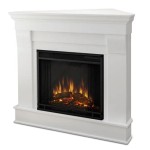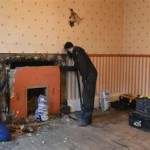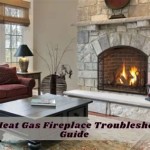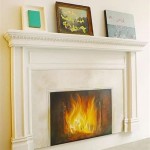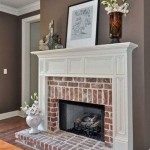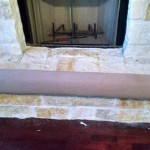Ventless Gas Log Fireplace Reviews: A Comprehensive Guide
Ventless gas log fireplaces offer a convenient and aesthetically pleasing alternative to traditional wood-burning fireplaces or vented gas log systems. Their primary advantage lies in their ability to operate without a chimney or vent, making them suitable for homes where installing a traditional fireplace is impractical or impossible. This article provides a comprehensive review of ventless gas log fireplaces, examining their features, advantages, disadvantages, and key considerations for potential buyers.
Ventless gas log fireplaces function by burning natural gas or propane cleanly and efficiently. They are designed to minimize carbon monoxide production, and most models incorporate oxygen depletion sensors (ODS) that automatically shut off the gas supply if oxygen levels in the room drop to unsafe levels. These features are critical for safe operation, and adherence to manufacturer guidelines and local codes is imperative.
Safety Considerations and Proper Installation
Safety is paramount when considering a ventless gas log fireplace. While these units are designed to operate safely indoors, they do release a small amount of combustion byproducts, including water vapor, carbon dioxide, and trace amounts of nitrogen dioxide. Proper installation and adherence to manufacturer specifications are crucial to minimize any potential risks. It is essential to understand the limitations of these systems and implement mitigation strategies.
A critical aspect of safe operation is ensuring adequate room size. Ventless fireplaces require a minimum room volume to allow for proper ventilation and prevent the buildup of combustion byproducts. Manufacturer specifications typically outline the required volume in cubic feet. Choosing a unit that is appropriately sized for the space is non-negotiable.
Another vital safety feature is the Oxygen Depletion Sensor (ODS). This sensor constantly monitors the oxygen levels in the room. If the oxygen level drops below a predetermined threshold, the ODS will automatically shut off the gas supply to the fireplace, preventing carbon monoxide poisoning. Regularly testing the ODS is an important maintenance task.
Installation should be performed by a qualified professional. A certified installer can ensure that the unit is properly connected to the gas supply, that the clearances to combustible materials are met, and that the fireplace operates safely and efficiently. Professional installation also provides assurance that the unit complies with local building codes.
Furthermore, houses with ventless gas log fireplaces should have working carbon monoxide detectors on every level, especially near sleeping areas. These detectors provide an additional layer of protection by alerting occupants to the presence of carbon monoxide, even if the ODS fails. Regular inspection and replacement of carbon monoxide detectors are crucial.
Finally, users should be aware of the potential for increased humidity levels when operating a ventless gas log fireplace. The combustion process produces water vapor, which can increase humidity in the room. This is particularly relevant in smaller spaces or during prolonged use. Consider using a dehumidifier to manage humidity levels and prevent mold growth.
Performance Characteristics and Efficiency
Ventless gas log fireplaces offer notable heating efficiency compared to traditional wood-burning fireplaces. Because they don't rely on a chimney to vent exhaust gases, they retain a higher percentage of the heat produced, radiating it directly into the room. This translates to lower heating costs and greater comfort during colder months. However, their heating output is limited, and they are best suited for supplemental heating rather than primary heating sources.
The heating output of a ventless gas log fireplace is measured in British Thermal Units (BTUs). A higher BTU rating indicates a greater heating capacity. When selecting a unit, consider the size of the room you intend to heat. A larger room will require a fireplace with a higher BTU rating. Overly large or small room sizes will impact the effectiveness of the heating process.
Fuel efficiency is another important consideration. Ventless gas log fireplaces are generally more fuel-efficient than vented gas log systems because they do not lose heat through the chimney. This can result in significant savings on gas bills over time. However, fuel consumption will vary depending on the BTU rating of the unit and the duration of operation.
The flame appearance and realism of the logs are also important aspects of the fireplace's performance. Some manufacturers offer more realistic-looking logs and flame patterns than others. Consider the aesthetic appeal of the unit and how well it complements the room's decor. High-quality log sets often feature intricate detailing and ember beds that glow realistically.
Maintenance requirements are relatively low for ventless gas log fireplaces. Regular cleaning of the logs and burner assembly is necessary to ensure optimal performance and prevent soot buildup. Follow the manufacturer's instructions for cleaning and maintenance procedures. Annual inspections by a qualified technician are also recommended to ensure safe and efficient operation.
Furthermore, consider the ignition system. Some ventless gas log fireplaces use a manual ignition system, while others have electronic ignition. Electronic ignition systems offer greater convenience and can often be controlled with a remote. The type of ignition system can impact the overall user experience. Consider the trade-offs between convenience and cost when making your selection.
Types of Ventless Gas Log Fireplaces and Features to Consider
Ventless gas log fireplaces are available in various styles and configurations, allowing consumers to choose a unit that suits their individual needs and preferences. Freestanding units, fireplace inserts, and wall-mounted models are all available. Each type offers unique advantages in terms of installation flexibility and aesthetic appeal.
Freestanding ventless gas log fireplaces are self-contained units that can be placed virtually anywhere in a room. They typically feature a decorative cabinet or surround that enhances their aesthetic appeal. Freestanding units offer greater flexibility in terms of placement compared to fireplace inserts.
Fireplace inserts are designed to be installed within an existing fireplace opening. They offer a convenient way to convert a traditional wood-burning fireplace into a gas-fueled appliance. Fireplace inserts can be an excellent option for homeowners looking to modernize their existing fireplace without undergoing extensive renovations.
Wall-mounted ventless gas log fireplaces are designed to be hung on a wall, similar to a television. They offer a sleek, modern look and can be a good option for smaller spaces. Wall-mounted units often feature a minimalist design and can be easily installed.
Key features to consider when selecting a ventless gas log fireplace include the type of fuel (natural gas or propane), the BTU rating, the ignition system, the presence of an ODS, the flame appearance, and the design and style of the unit. Also, consider the availability of accessories such as remote controls, thermostats, and decorative log sets.
The control options are also important. Some ventless gas log fireplaces have simple on/off switches, while others offer more sophisticated controls, such as adjustable flame height and heat output. Consider the level of control you desire when making your selection. Models with remote controls and thermostats offer greater convenience and allow for more precise temperature regulation.
Finally, consider the warranty offered by the manufacturer. A longer warranty period provides greater peace of mind and protects against potential defects in materials or workmanship. Read the warranty carefully to understand the terms and conditions. Reputable manufacturers typically offer comprehensive warranties that cover the major components of the fireplace.
By carefully considering these factors, consumers can make an informed decision and select a ventless gas log fireplace that provides safe, efficient, and aesthetically pleasing supplemental heating for their homes.

Reviews For Pleasant Hearth Wildwood 24 In Vent Free Dual Fuel Gas Fireplace Logs Pg 1 The Home Depot

Napoleon Gvfl30 Ventless Gas Log Set 30 Inch
:max_bytes(150000):strip_icc()/ventless-gas-fireplaces-4160746-hero-f9d4bdcd9bd446eb84406de306f790ba.jpg?strip=all)
How To Pick Out A Ventless Gas Fireplace

Reviews For Duluth Forge Dual Fuel Ventless Gas Fireplace Insert 32 000 Btu T Stat Control Model Fdf400t Zc Pg 1 The Home Depot

White Mountain Hearth Vfpa32bp Vail Ventless Premium Fireplace With Slope Glaze Burner And Log Set 32

What Is A Ventless Gas Fireplace Experts In Gaithersbutg Md

Reviews For Duluth Forge Dual Fuel Ventless Gas Fireplace 26 000 Btu Remote Control Antique White Finish Pg 1 The Home Depot

Considering A Ventless Gas Fireplace Here S What You Need To Know Bob Vila

Empire Ponderosa 18 Vent Free Gas Log With Electronic Pilot Fine S

White Mountain Hearth Vfdxxl Whiskey River Refractory Gas Log Set With Ventless Burner
Related Posts

